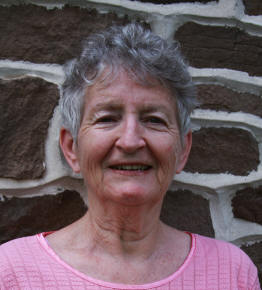 Mary Ann Ryan recently wrote an article entitled "Pollinators – Who Cares?" about creating areas in your yard that attract beneficial insects, and compounding your efforts by working adjacent to a neighbor’s garden. I’d like to expand on that with some
additional suggestions – how to create nature-friendly garden corridors.
Mary Ann Ryan recently wrote an article entitled "Pollinators – Who Cares?" about creating areas in your yard that attract beneficial insects, and compounding your efforts by working adjacent to a neighbor’s garden. I’d like to expand on that with some
additional suggestions – how to create nature-friendly garden corridors.
One good option with agreeable neighbors is a wildlife corridor through the backyards in a development. Often developments 10 years old or newer have plantings in the front and along the sides of the house, while the backyards are all lawn. If each property owner agreed to give up 20 to 25 feet of lawn on back to back properties, they could plant
trees ten feet or so inside the property line, and fill in the remaining area with shrubs and perennials. This wildlife corridor at the rear of adjoining properties, hopefully comprised of many yards, will shelter and feed birds, small mammals, beneficial insects and amphibians. I suggest using native trees, shrubs and a significant number of native flowering plants. The
first few years, the area would require mulching for weed control. Shredded leaves, straw, or commercial mulch would do the job. Commercial mulch can be inexpensive if you have access to a pickup truck and can purchase it by the scoop.
In a few years, leaves from the trees will provide nature’s mulch – leaf litter. As mulch, leaf litter maintains the soil’s moisture and moderates soil temperatures for the plants. Many small animals live in and under leaf litter. Tree frogs hibernate under it, caterpillar larvae winter in it. Many birds poke around in leaf litter during the winter
searching for insects as a good protein source.
Remember, the four requirements to create wildlife habitat: food, shelter, place to raise young, and water. The water source can be a bird bath, fountain, small pond with a shallow area, no more than two inches deep for birds to bathe and drink. A birdbath near your house, with an electric heater in it provides open water during the winter.
A nature corridor could include a couple of brush piles, which provide shelter in bad weather, as well as safety from predators. Birds attracted to brush piles include Eastern Towhee, Brown Thrasher, Gray Catbird, House Wren and Carolina Wren. I often see a Carolina Wren in the winter singing on top of one of our brush piles.
Good trees for attracting birds and some butterflies include dogwood, tulip, cherry, holly, spruce, pine, sycamore and oaks. Check mature height before you plant so that the tree will fit your landscape plan. Shrubs might include serviceberry (Amelanchier), chokecherries (Prunus), elderberries, bayberry, cotoneaster, viburnum, and red buckeye (Aesculus
pavia). The red buckeye is a fabulous hummingbird attractor. Suggested flowering perennials are love-in-a-mist, poppies, asters, purple coneflower, black-eyed Susan, sedums, and ironweed. Annuals that can be broadcast-seeded are cosmos and zinnias. You will find that the birds who visit your wildlife area will ‘plant’ their favorite shrubs, trees and flowers through their
droppings. Don’t deadhead the flowers in the fall, as birds will eat the seeds until they are gone.
You will be surprised by the enjoyment that you, your children or grandchildren, and your neighbors will receive by observing the insects, birds and small animals who utilize your wildlife corridor. There are many free publications at the Penn State Cooperative Extension office that you can obtain to further your knowledge. Also, check out the Penn
State website: http://extension.psu.edu for additional ideas. Click on the College of Agriculture, and then Horticulture and Publications.
Read other articles on garden and landscape design
Read other articles on ecological gardening & native plants
Read
other articles by Faith Peterson